Vessu, Anantnag: Sandeep Koul’s heart lurched in fear as he waited at an ATM to withdraw money for his five-year-old daughter’s medicines in Anantnag, Kashmir. It was a routine task, but he was afraid it could get him killed.
“A young man standing next to me was trying to take out his phone from his pocket. I thought he was taking out a pistol to shoot me. I felt terrified,” the 39-year-old recalls, his voice quivering slightly at the memory.
Koul, a government employee, is a resident of a transit camp for Kashmiri Pandits at Vessu in Anantnag and a ‘beneficiary’ of the Prime Minister’s employment package for the community. But he’s tired of being ‘rehabilitated’ in the Valley and hopes to relocate to a place where he doesn’t have to look over his shoulder every few minutes.
Sandeep is not the only one gripped with fear and anxiety. Thousands of Kashmiri Pandits, including nearly 4,500 who have been living and working in Kashmir under the PM’s job scheme since 2010, have discovered that repatriation and employment have come at the cost of a risk to their lives.
There has been a spate of targeted civilian killings this year in Kashmir — with Muslim as well as Hindu victims — but fear among Kashmiri Pandits intensified when on 12 May, Rahul Bhat, a government employee from the community, was killed inside the Tehsil office of Budgam’s Chadoora. He was in his office, a high-security zone, when militants armed with pistols opened fire at him.
Since then, many Kashmiri Pandits, especially those who were ‘rehabilitated’ under the job scheme, have started to flee the Valley for fear of being killed by what J&K security agencies call “hybrid” or “part-time” terrorists — essentially, young people who moonlight as militants but are difficult to identify because they don’t have a prior criminal record.
But, getting out of the Valley has not been easy since the government has ordered the transit camps to not let the Pandits leave — even if it means keeping them virtually locked up.
Those who are still here can only wait for their chance to go somewhere safer. And they hope this will be their last exodus. Because now they do not want to ever come back. Not even for the sake of a job or money.
Also Read: ‘No threat to Dogras’ — Kashmir Hindu teacher killed was scared but ‘told to resume duty’
A third migration
There are rows upon rows of neat little houses in Vessu Pandit Colony at Anantnag. It once housed 900 employees, residents say, but since May this year, about 300 fled in the dead of the night, fearing for their safety.
To stop more people from leaving, Jammu and Kashmir Police and Central Reserve Police Force (CRPF) personnel guard the entry and exit points. Movement is restricted, and many say they are not able to buy milk, groceries, and medicines when they need them.
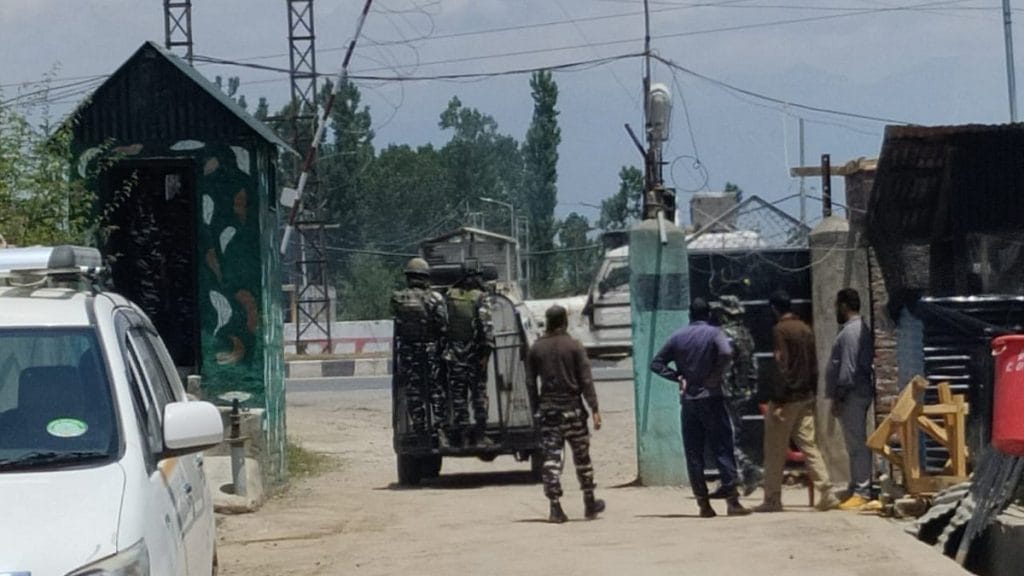
“I was 10 years old when we first migrated from Kashmir to Jammu in the 1990s. My second migration took place in 2010, when I got the job here, and now we are going through a third migration because of the deteriorating security situation. But we are not allowed to leave. It’s pure political terrorism,” Sandeep Raina, a government employee in his 30s, says.
There’s similar desperation elsewhere in Kashmir too, and camps in Baramulla, Kupwara, and Sheikhpora have reportedly seen families leave under the cover of darkness.
In Vessu, the remaining families continue to protest to be relocated outside Kashmir and given jobs, but they are losing hope every day.
Amid mounting criticism from Opposition parties, Union Home Minister and BJP leader Amit Shah held a “high-level meeting” about the security situation in Kashmir last week, but it does not appear as if freedom of movement is on the cards yet for the Pandits.
Speaking to ThePrint, Ashok Koul, BJP general secretary for the union territory of Jammu, Kashmir, and Ladakh (organisation), said that the party is “not in favour” of relocating Kashmiri Pandits although it would extend security to whoever needed it.
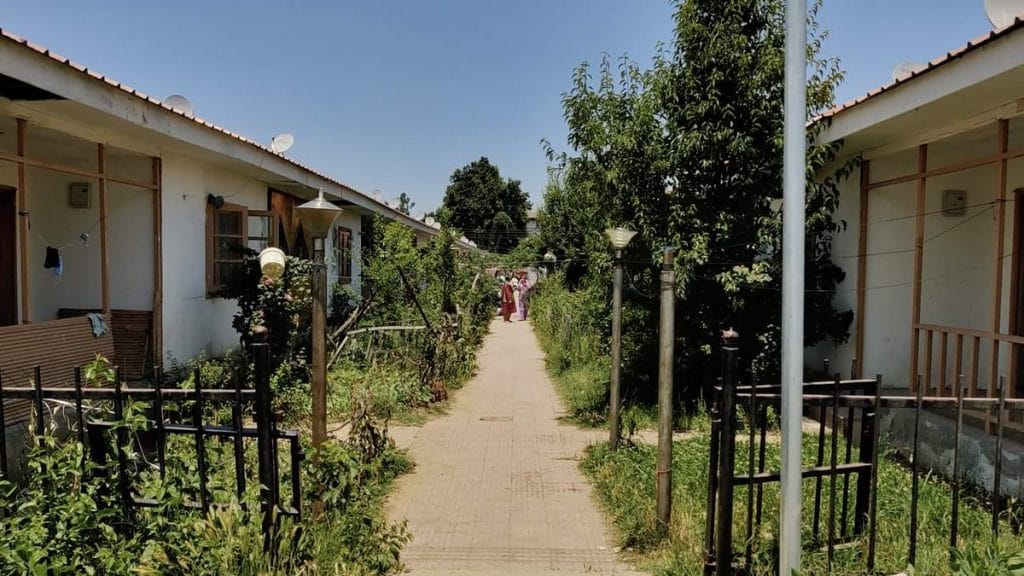
‘Veneer of normalcy must be maintained’
The Pandits will not be allowed to go anywhere if the BJP can help it, according to Mehbooba Mufti, Peoples Democratic Party (PDP) leader and former Jammu & Kashmir chief minister.
“The veneer [of normalcy] must be maintained even if it means locking [Pandits] up like animals,” she said, alluding to the abrogation of Section 370 in J&K in 2019, and the former state coming under the Centre’s rule as a union territory.
The killings of Kashmiri Pandits, she alleged, were a “little more than an inconvenience to the BJP” because they only served “to further the narrative of ‘Hindu khatre mein hain (Hindus are in danger)…Whether it is Muslims or Pandits, to BJP we are just cannon fodder.”
On Kashmiri Pandits leaving the Valley, former J&K chief minister and National Conference president Omar Abdullah said he saw it as a “personal failure” in an interview with the Indian Express this week.
“I was part of the government that brought this (PM’s employment) package in and implemented it… Every single one of the employees who goes back from here, I consider a personal failure on my part,” he’d said.
The questioning of pinning responsibility aside, the biggest challenge currently for Kashmir’s security apparatus is the more insidious form that militancy has taken of late.
Also read: Only dialogue, not Army, can stop targeting of Kashmiri Pandits. But make J&K a state first
‘Hybrid’ terrorists — radicalised online, part-time killers
Since March this year, 18 civilians have been shot to death across the Valley. Among them were 12 Muslims, one Kashmiri Pandit, one Dogra woman from Jammu, a bank manager from Rajasthan, and a migrant labourer from Bihar.
According to security officers in J&K, many of these killings were carried out by “hybrid terrorists” — a relatively new categorisation referring to local residents who are radicalised online by terror operatives and sent out on assignments, between which they carry on with their ordinary lives. Many are young people with no prior criminal records.
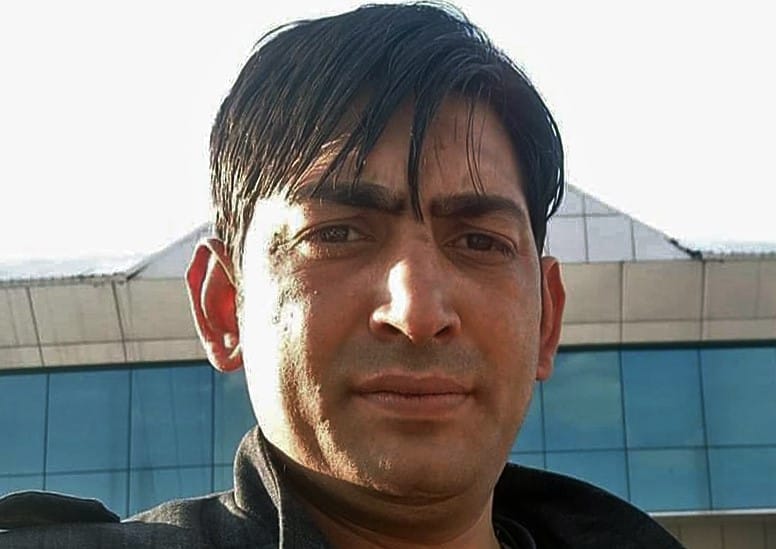
“Earlier, there was a proper chain-of-command structure in terror ranks. If you nabbed one, you got information about the whole group. But now the entire scene has changed. These hybrid modules don’t even know their handlers. They communicate over social media, use virtual numbers and VPN (virtual private networks). They don’t even have to be trained — all they have to do is shoot to kill,” Vijay Kumar, Inspector General of Police in Kashmir, told ThePrint.
Of the 27 killings since October, at least 11 were carried out by hybrid terrorists, police data shows. This year alone, security officials have recovered 145 pistols from “hybrid terrorists” and those killed in encounters, but many more weapons are believed to be in circulation.
Kashmiri Pandits are far from the only targets of this new breed of part-time terrorists.
Also read: ‘No threat to Dogras’ — Kashmir Hindu teacher killed was scared but ‘told to resume duty’
‘He was killed by a boy who grew up in front of us’
More Muslims than Hindus have been at the receiving end of bullets in Kashmir, although their stories don’t usually make many headlines.
ThePrint went to Srinagar’s Khonmoh area, where the elected sarpanch, Sameer Bhat, a Muslim, was killed on 9 March.
He was gunned down by a young acquaintance from the neighbourhood, Sameer Bhat’s family members say — a boy who could often seek the sarpanch’s counsel about matters such as power connections.
“My brother always helped people. Even till his last day, his intention was to help the boy for electricity… the same boy who killed him,” Sameer Bhat’s elder brother Aijaz says. The Resistance Front (TRF), linked with the Lashkar-e-Taiba, had claimed responsibility for the attack. At the time of his death, Sameer Bhat had ventured out from a hotel where he, like other panchayat members from Kashmir, had been lodged for their safety.
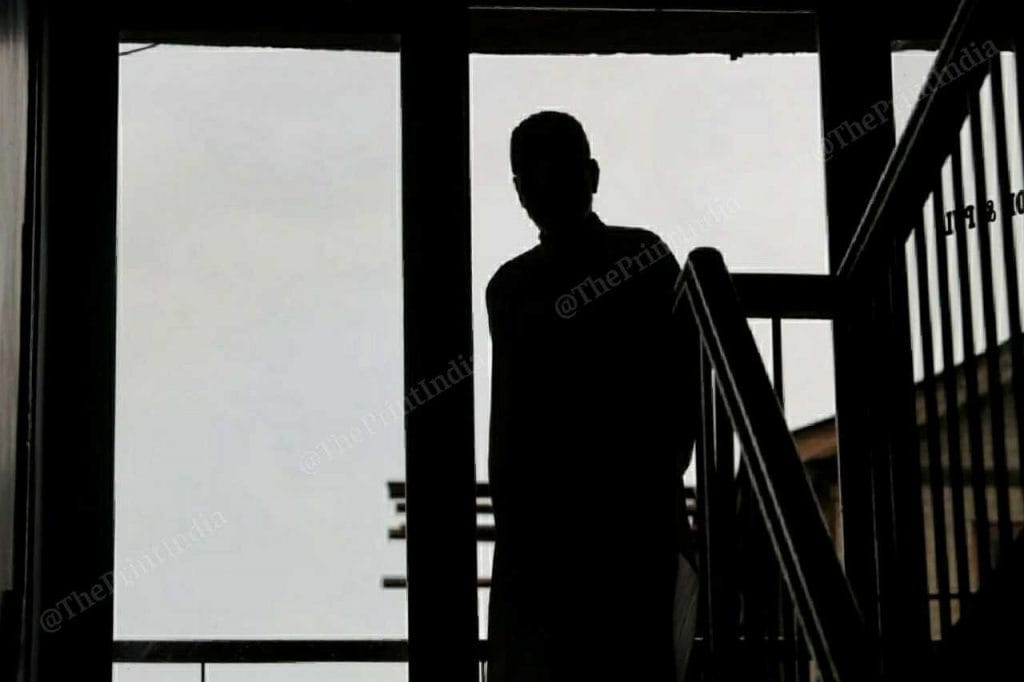
“He was the most articulate and qualified sarpanch in Kashmir. He was chosen to be part of the sarpanch delegation which went to meet Home Minister Amit Shah in September 2019 after the abrogation of Article 370,” a friend of Sameer says on condition of anonymity.
Bhat’s family and neighbours are still reeling from the attack. The friend who spoke to ThePrint seemed visibly nervous, his eyes darting as if expecting an ambush.
“If I say I am not afraid after this, I will be lying to you. The situation for all Muslims and non-Muslims is worse than it was in the 1990s. Back then, we knew who has joined the militant ranks but now we don’t know. Sameer was killed by a boy who grew up in front of us,” he says.
For migrants, it’s a choice between hunger and bullets
“Outsiders are not welcome”. This, sources in the security establishment say, is the message that terrorists want to send when they target migrant workers, religion no bar.
Earlier this month, Khushdil, a 17-year-old migrant labourer from Bihar, was killed by terrorists in Budgam. A bank manager from Rajasthan, Vijay Kumar, was also killed on the same day in Kulgam.
According to the J&K Labour Department, approximately 140,000 migrant workers from different states come to Kashmir each year, although other government estimates reportedly put the number at around four lakh.
Yet, for many “outsiders”, Kashmir has become home.
Some migrants leave with the onset of winter, but others stay, like 34-year-old Rafiq from West Bengal’s Malda, who has been working in Shopian for 15 years.
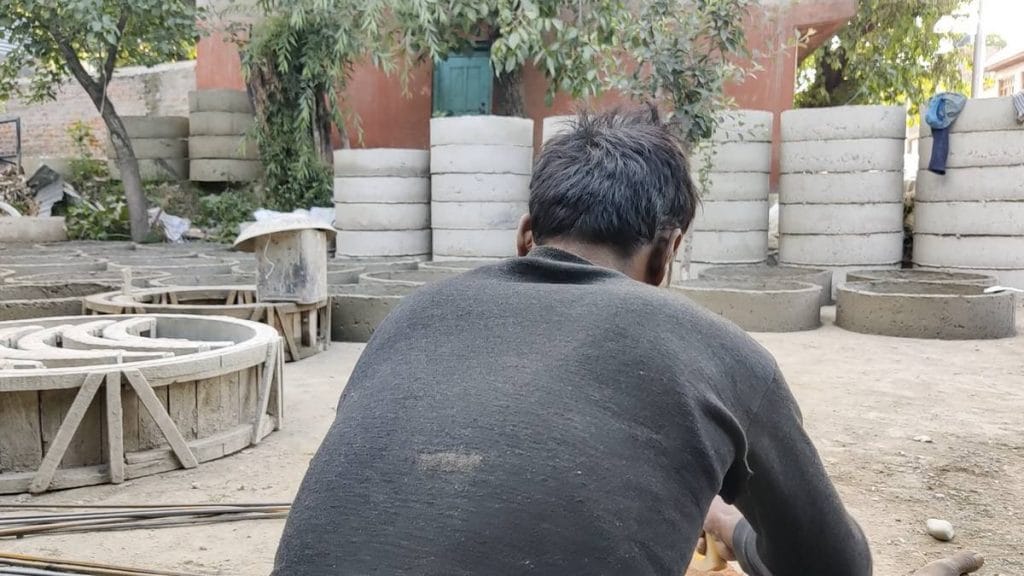
“We have been seeing this violence against non-locals for some years. We fear for our lives, but we have no other option than to work here. Our families will either die of hunger back home, or we will die of bullets in Kashmir,” he says.
Rafiq specialises in masonry and sends almost everything he earns back home because his manager, a Kashmiri Muslim, takes care of his food and stay in the Valley. Momin, 36, who works with Rafiq and is also a migrant, also stays on for the same reason.
“We earn Rs 15,000-20,000 a month, and are able to send almost all of it back home. It is way more than what we could have earned in any other part of the country. Plus, the behaviour of Kashmiris is very nice towards us,” Momin says.
“But now it’s becoming tougher by the day because there’s no certainty for life. Today we are alive, tomorrow we can be killed.”
Also read: More tourists doesn’t mean Kashmir is ‘normal’. ‘Naya Kashmir’ is still not in sight
Water instead of milk, cramped cabins, no freedom
Located on the Jammu-Srinagar highway, Vessu transit camp has been home to hundreds of Kashmiri Pandits, mostly government employees and their families, since it was set up in 2010.
The camp looks almost charming at first glance with its paved paths and small houses with sloping roofs, but these are just prefabricated cabins made with asbestos sheets.
Inside the little houses, the walls are painted in bright colours — pink, green, orange — but the space allocated is simply not enough. At least six to seven people, either from the same or different families, are crammed into one cabin, which is roughly the size of a modest 1BHK — about 300sq ft.
The lack of privacy is the least of their problems. Many families have ailing children, elderly parents and grandparents, but the supply of food and medicine is insufficient. These families have been living a miserable life. Last year, the government built larger two-storeyed structures, but so far only 20 families have been allocated there. Most of the units have been taken over by the CRPF.
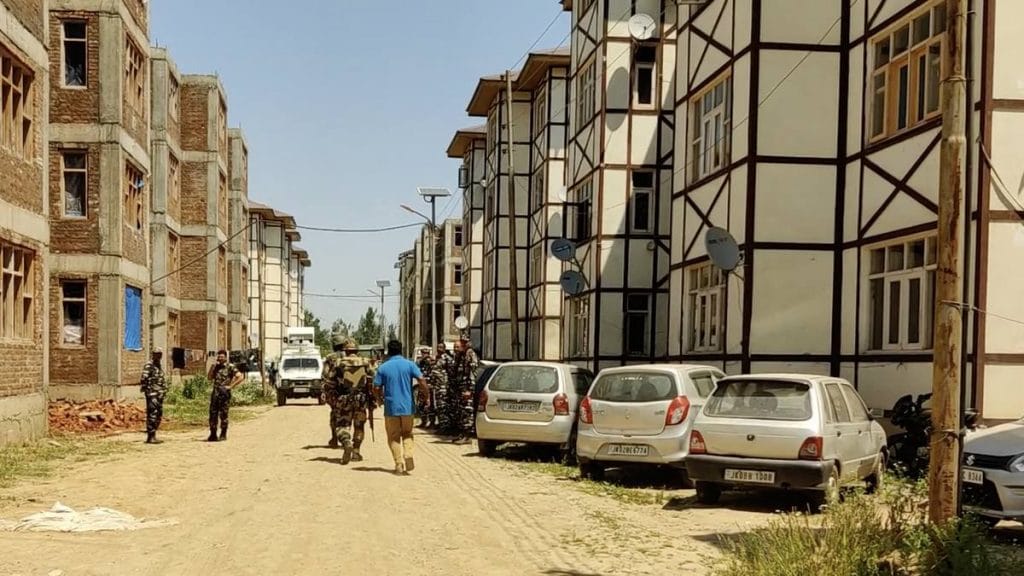
The scarcities here are distressing, but not being able to move around freely even more so.
On 1 June, when five-year-old Hiyaashvi had high fever, her father Sandeep Koul had to plead and fight with CRPF personnel at the Vessu camp to take her to a doctor, even as she cried uncontrollably. When his wife wanted to comfort the child with warm milk, she could only arrange for heated water, he says.
The camp is like a prison, yet leaving its confines makes him feel helpless and exposed. When he did manage to take his daughter to a clinic that day and then went to a nearby ATM to withdraw money, he expected to be the target of gunfire.
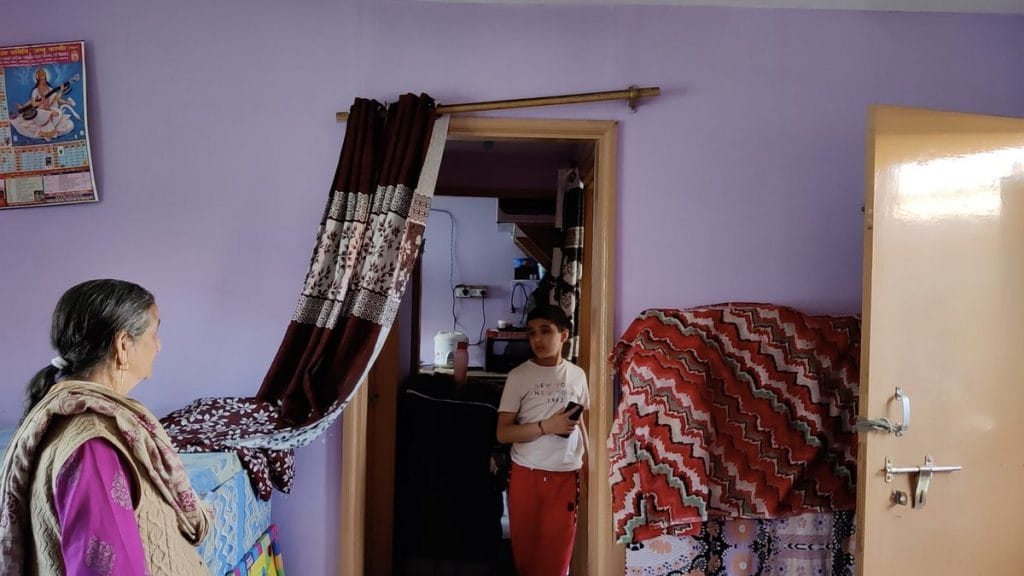
“This is the fear we are living with. This government boasts about giving protection to Kashmiri Pandits in the valley, where as the truth is that they have miserably failed in protecting us and now that we want to leave,” he says, echoing the sentiments of many other Pandits.
At 82 years old, Prabha Koul (name changed) is exhausted too. She too left Kashmir in the 90s and returned in 2010 with her daughter. She recently had an asthma attack, she says, but her daughter was not able to even take her to the hospital.
“I don’t care anymore if I die here, it’s my land. But I just want to request the government to at least let the kids leave the Valley if they cannot protect us here,” she says, breaking down as she speaks.
Yet, there are still a few Pandits who are determined to stay on in the Valley — those who never left.
Also read: Let’s discuss: Is Modi govt’s Kashmir policy a success, failure or same old muddling along?
‘Leaving is not an option’
At least 808 Kashmiri Pandit families did not migrate during the exodus in 1990-1991, according to the Kashmiri Pandit Sangharsh Committee, an organisation of Kashmiri Pandits who stayed back in the Valley after the exodus. One among them is the family of G.N. Lal in the Balhama district of Srinagar.
The 63-year-old acknowledges that his family have “suffered tremendously” in the last 33 years, but leaving is “not an option”. All their friends and well-wishers are here, he explains.
“We have very good relations with everyone and if we migrate we will lose all that. Of course, there’s an atmosphere of fear, but I believe that’s for everyone, even for the Muslim families. They, in fact, have to face wrath from both sides—militants and security forces,” Lal says.
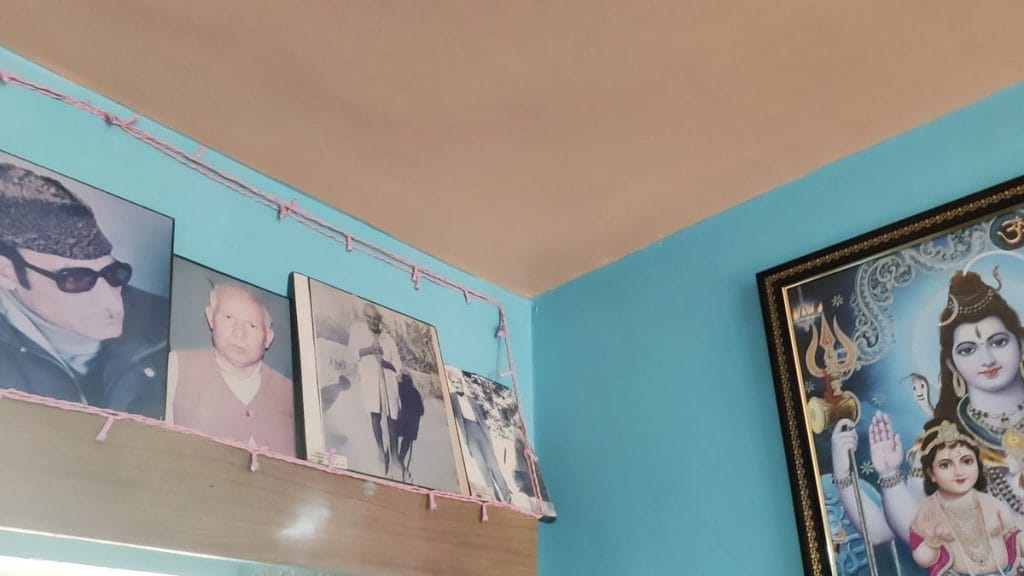
The security situation in Kashmir has worsened, he believes, ever since the abrogation of Article 370, with Pandits and Muslims suffering alike.
“Every Kashmiri cannot be labelled as a terrorist. We are surrounded by Muslims here but they have stood by us rock solid every time the killings started. Yes, militants also exist, but we have to demarcate between militants and common people who don’t want anything but peace,” he says.
Lal believes terrorism should be targeted, but not Muslims. “Even outside Kashmir, many Hindus are lynching Muslims for their religion, but that does not mean that the entire religion can be defamed. Similarly, if there’s militancy in Kashmir, every Muslim cannot be targeted. This will push the Kashmiris to the wall and will help the militants — exactly what we are witnessing in the Valley now,” he says.
Also read: Behind Kashmir civilian killings, local men ‘made terrorists online less than 10-15 days earlier’
At Kheer Bhawani Mela, a brief sense of healing
Even the tight security at Ganderbal’s Ragnya Devi Temple can’t dampen the crowd’s enthusiasm as the colourful Mata Kheer Bhawani festival takes off after a break of two years.
For Kashmiri Pandits, this is perhaps the most anticipated function of the religious calendar, but it is also important for another reason — it serves as a meeting ground for Hindus and Muslims.
“I come to the mela hoping to meet my old Pandit friend who left the Valley during the exodus. He was our neighbour and I couldn’t do anything to stop him. Now I just want to meet him and take him home,” says 68-year-old Mohammed Sultan Dar.
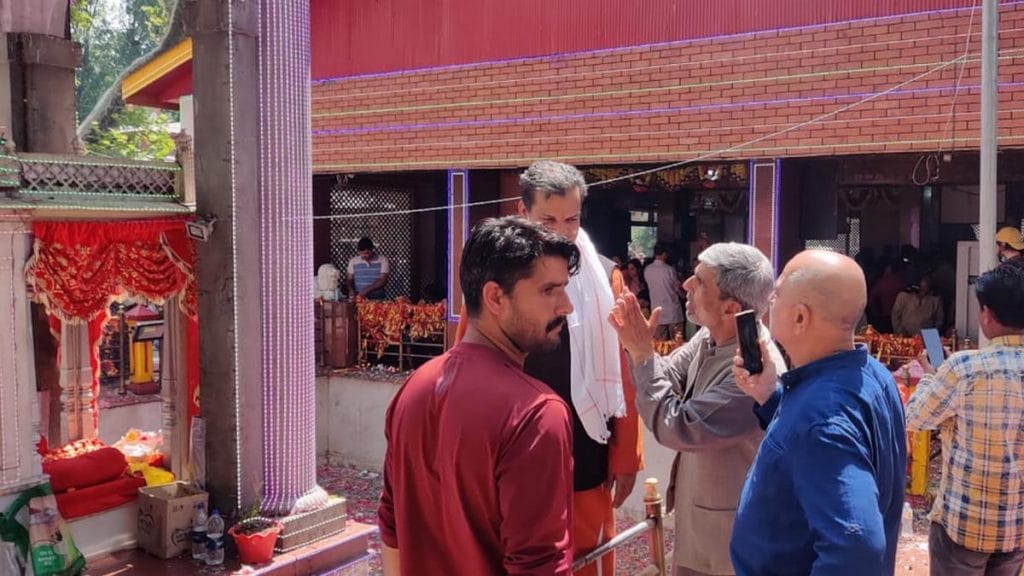
However, the management of Kheer Bhawani says this year the crowd is much less than usual. Where 30,000 to 40,000 people would attend in previous years, this year has seen just about 2,500 visitors.
“The sense of fear and trauma is such this year that only the Pandits from the Valley who never left have come to the festival. The ones who migrated or the ones who have been rehabilitated have not shown up this year. Most of the crowd comprises Hindu tourists from across the country and Muslims from the Valley,” says Raman Koul, a 37-year-old Kashmiri Pandit from Srinagar.
Nevertheless, the old sense of bonhomie prevails. “There are more Muslims than Hindus here,” says Vivek Kaul, a 31-year-old Kashmiri Pandit. “They even do all the preparations and the decor for the puja every year. They’re walking the extra mile to make us feel warm and protected.”

The festival is not the only religious ground where togetherness among the communities — the famous ‘Kashmiriyat’ — has been in evidence.
Last week, for instance, a Muslim cleric, Maulana Fayaz Amjadi told his congregation in Anantnag that Islam did not permit killing people in the name of jihad, and that Muslims were willing to give up their own land for the protection of their brethren from other communities. His speech was reportedly received with enthusiasm by the gathering of locals.
In the vitiated atmosphere of the Valley, statements like these are a breath of fresh air, even if their effects are fleeting.
(Edited by Asavari Singh)






